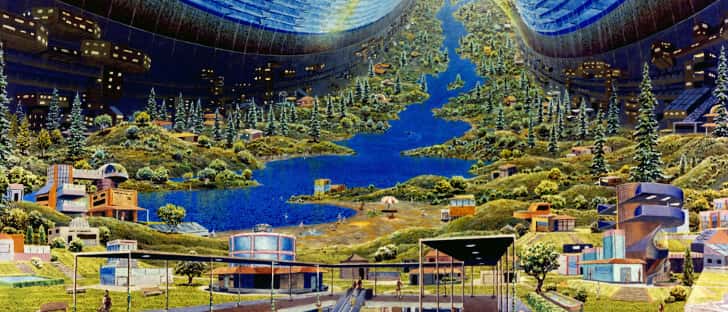With Virgin Galactic on the horizon and the Russian Space Agency offering flights up to the International Space Station, ‘space tourism’ has opened up plenty of possibilities for what the average space enthusiast can indulge in. One of the most exciting prospects for those who want to go into space is the idea of a ‘space hotel’, and all of the bizarre leisure activities and sports that could be played in the zero-gee environments of space.
At first glance, the idea of a swimming pool in space might seem counterintuitive – after all, in zero gee you’re essentially ‘swimming’ through the air – but in an extensive paper released on ‘spacefuture.com’ the problem of swimming pools is explored fully, and not as bizarre as it may seem at first.
The primary problem of swimming pools in space is the way water behaves. Without gravity, water’s inherent tension holds itself together in a spherical shape, or clings to a surface when it comes in contact with another object – as demonstrated in this entertaining experiment. Not only does this mean a swimming pool in an environment without gravity would be spherical, and thus require a breathing apparatus (not hard to find in space!) but the density would be higher, so it would be much harder to swim.
Whilst this makes the pool slightly less fun for water-related fun, it means no-gravity pools could be great exercise for astronauts or those who wish to stay in space over long-periods, as prolonged time in weightless environments tends to make some muscles weaker. (When there is no gravity to overcome, the body doesn’t need to support itself, meaning many muscles, such as those that support the back and those in the legs, don’t get much of the exercise they would in a normal day on earth.)

For a more familiar-looking pool, artificial gravity is needed. So far, the most practical method to artificially create gravity is using the forces of inertia that occur in rotation – think about swinging a bucket of water around your head. To create this kind of inertia however requires two things: a substantial length from the axis, and the right amount of rotational speed.
The O’Neill cylinder suggests that an environment with gravity created in this way – through centrifugal force – could be 20 miles across and 4 miles in diameter. Other habitats such as the Bernal sphere suggest such environments could house 10,000 people, all in an environment with artificial gravity.
But there’s an easier way to create a swimming pool in space, complete with artificial gravity. A far smaller cylinder, with ‘lips’ on either end to contain water, could act as an artificial gravity swimming pool in a space habitat that doesn’t necessarily support artificial gravity throughout. Think of a washing machine cylinder throwing your clothes along the sides, or the famous Gravitron fairground ride. Such a swimming pool is a far more reasonable, and easier, possibility; and would require a lot less in terms of heating, ventilation, and maintenance.
Although the spacefuture article indicates some kind of vacuum or pump would be required to disperse or remove water that may congregate in the centre of the cylindrical room, the concept of a loop-like swimming pool with a zero-gee centre opens up a whole world of possibilities for fun and games. As well as swimming much as you would on earth, you would be able to jump up from the pool and land on the ‘ceiling’ with completely reversed gravity!
While this would be rather dangerous normally, with a body of water there to break your fall even non-astronauts would be able to enjoy the topsy-turvy nature of space to the fullest.
Whilst we’re only just breaking the boundaries of space as a tourist destination, the kind of sports and activities we might get up to amongst the stars is an exciting and developing prospect. Whilst many pose problems, the solutions are often fascinatingly different and interesting.


